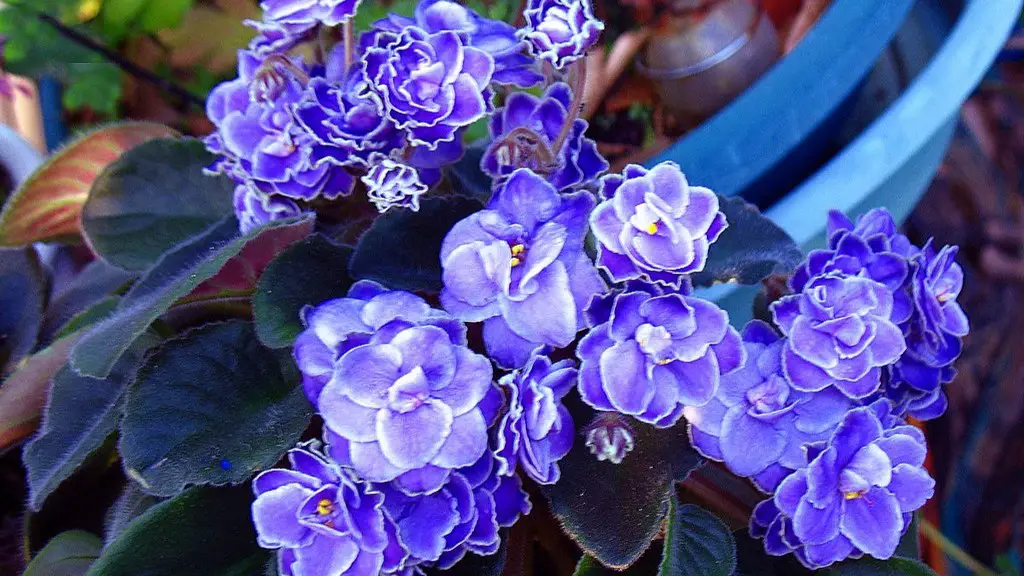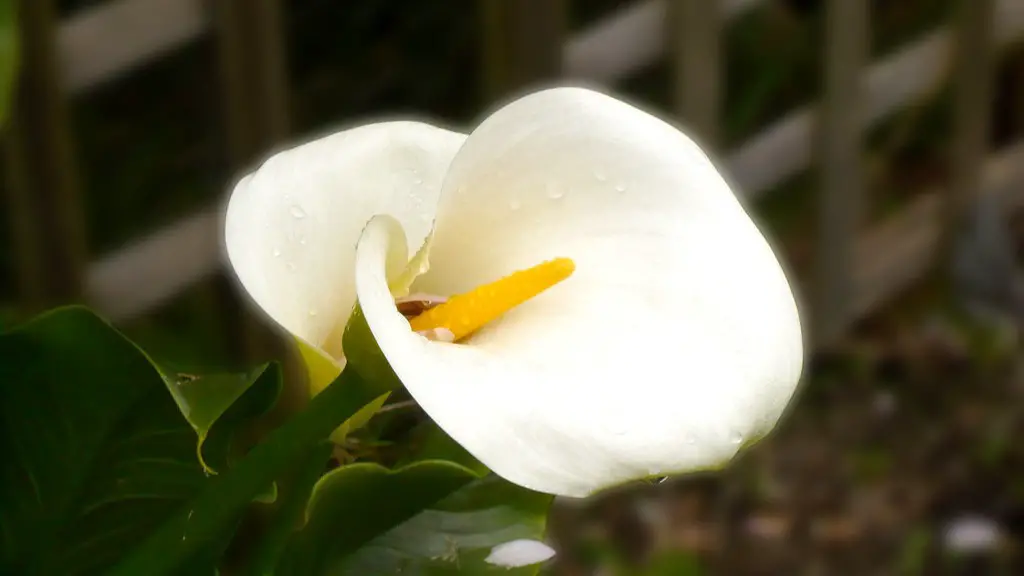African violets are a popular type of houseplant, known for their vibrant blooms. Getting them to bloom can be a challenge, but with the right care, they will reward you with beautiful flowers. Here are some tips on how to get African vioslets to bloom:
1. Give them the right amount of light. African violets need 12-14 hours of bright, indirect light every day in order to bloom. If they don’t get enough light, they will produce fewer flowers.
2. Keep them evenly watered. African violets need to be kept moist, but not wet. Water them from the bottom, using a self-watering pot or a drip tray.
3. Use the right type of fertilizer. African violets need a fertilizer that is high in phosphorus, such as a bloom booster fertilizer. Feed them every other week during the growing season.
4. Keep them at the right temperature. African violets prefer a warm, humid environment. If your home is too dry, you can mist the leaves or use a humidifier to raise the humidity levels.
5. Deadhead the flowers. Once the flowers start to fade, remove them by snipping off
If you want your African violets to bloom, you should make sure they are getting enough light. They also need to be kept warm, so a grow light might be necessary. African violets also need to be fertilized regularly and have their leaves misted.
How do you force an African violet to bloom?
If you want your African violet to bloom, make sure it’s getting enough light. African violets need indirect sunlight, direct sunlight can burn the leaves. Choose a north- or east- facing window for best results. Keep plants away from cold glass and rotate the pot once a week so all leaves receive light.
African violets typically bloom every 6 to 8 weeks. The key to getting them to bloom more often is to disbud the old flowers. This encourages the plant to produce new flowers.
What time of year do African violets bloom
African violets are a beautiful type of flower that can bloom nearly year-round. If you are able to provide the correct conditions, expect your African violets to bloom 10-12 months each year. Each bloom lasts for about 2-3 weeks, making them a lovely addition to any home or office.
A wicking system is a great way to make sure your African violets are never over watered. By setting up a wicking system, you can water your plants once a week and allow the plant to completely dry between waterings.
Does Epsom salt help African violets bloom?
Epsom salts are a great way to provide essential magnesium and sulfur to your plants. This simple solution can be made by mixing one and a half teaspoons of Epsom salts in a quart of tepid water. Swirl the solution to help the salts dissolve and then water your plants (below the leaves) with the solution once a month.
To get the best color and blooms from your plants, grow them in bright, indirect light. A plant stand three feet away from a west- or south-facing window is an ideal location. Plants will still grow when situated right beside north- or east-facing windows, but leaves will be thin and spindly, and plants less likely to bloom.
Should you mist an African Violet?
When watering your African violet, it is important to avoid getting water on the foliage. Water on the foliage may cause permanent leaf spotting. Instead, water the plant at the base, making sure that the crown (the section of the plant at soil level) is not saturated with water. This will help to avoid crown rot.
If powdery mildew on African violets doesn’t improve, try spraying the plants lightly with a mixture of 1 teaspoon (5 ml) of baking soda in 1 quart (1 L) of water. You can also spray the air around the plant with Lysol or another household disinfectant but be careful not to get too much spray on the leaves.
What causes an African violet not to bloom
African violets need bright, indirect sunlight to bloom well. Too little sunlight causes them to stretch for the light and produce few or no flowers; too much sun can burn the leaves. An east-facing window is ideal, especially with a sheer curtain to block the sun’s harshest rays.
African violets need at least 10 hours of bright, filtered light every day to do well. They should never be in direct sunlight, as this will scorch them. The soil should be kept moist, but well-drained. You want moist soil, not soggy soil.
What pots are best for African violets?
If you’re looking for the best pots for African violets, we’ve got a few great recommendations for you! The Mkono 3 Pack Self Watering Plastic Planter is a great option if you’re looking for an affordable and attractive option. The Ceramic Pot with Saucer is a great option if you’re looking for something a little more decorative, and the Blue Self Watering Ceramic Planter is perfect if you’re looking for a pop of color. The Aquaphoric Self Watering Planter is a great option if you’re looking for a self-watering option, and the Self Aerating Self Watering Pot is perfect if you’re looking for a pot that will help your plants stay healthy and aerated. Finally, the Terracotta Pot is a great option if you’re looking for a classic and durable option.
It’s so important to repot your African violets because of their long lifespan. By doing so, you ensure that the plant will have the necessary room to grow and thrive for many years to come.
Do African violets need bigger pots
It’s important to choose a pot that’s on the smaller side when you’re growing African violets. This will help the plant to stay slightly pot-bound, which is ideal for this type of plant. Keep in mind that if you have a standard African violet plant, your starter pot should be about 3-4 inches in diameter.
If you want your African Violet to stay healthy throughout the year, you need to fertilize it during the spring and summer. You should fertilize your African Violet once every 14 days during these seasons. However, in the fall and winter, you should not fertilize the plant at all to prevent over-fertilizing.
Can I water African violets with tap water?
If you are unsure about the quality of your tap water, it is best to use filtered or distilled water for your African violets. This will help to ensure that your plants are getting the best possible water and avoid any potential issues.
Watering your plants is very important to encourage blooming. Make sure to keep the soil moist to dry, and allow the soil around the roots to dry out before watering again. Watering from the bottom with room temperature water is the best way to water your plants. Place the plastic grower’s pot in water and allow the plant to absorb the water for no more than 30 minutes.
Warp Up
In order to get African violets to bloom, you will need to provide them with the proper amount of water and sunlight. African violets need to be watered about once a week, and they prefer to be in an area that receives indirect sunlight.
If you want your African violets to bloom, you need to give them the right amount of light and water. African violets need about 12 hours of light every day, and you should water them when the soil is dry.





